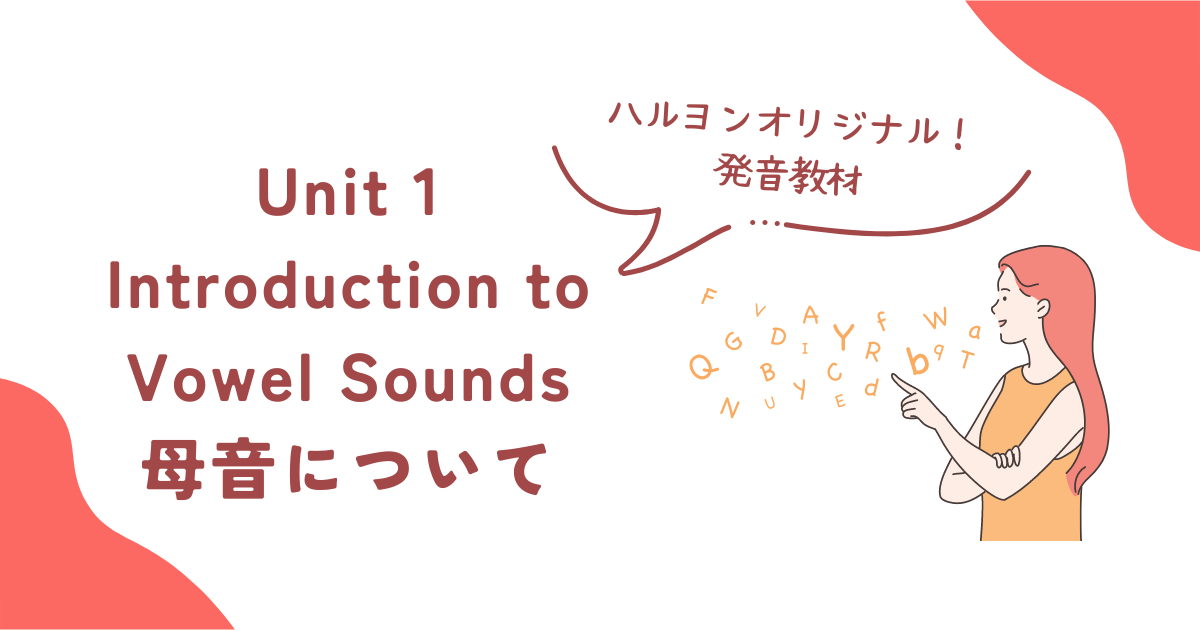PRONUNCIATION SYMBOLS | 発音記号
| Matsuzawa, 2010 Am. | Word 単語 | Katakana カタカナ |
|---|---|---|
| /ɑ/ | bot | ア |
| /i:/ | beet | イー |
| /i/ | bit | イ |
| /ei/ | bait | エイ |
| /e/ | bet | エ |
| /æ/ | bat | エァ |
| /uː/ | boot | ウー |
| /u/ | good | ウ |
| /ou/ | boat | オウ |
| /ɔː/ | bought | オオ |
| /ə/ | abbot | アッ |
| /ʌ/ | but | アッ |
| /ɚ:/ | bird | アr |
| /ɚ/ | Albert | アr |
| /au/ | about | アウ |
| /ai/ | bite | アイ |
| /ɔi/ | boy | オイ |
- /a/ unrounded and front vowel
-
/a/ 丸みのない前の母音
- /ɒ/ rounded and back vowel
-
/ɒ/ 丸みを帯びた後ろの母音
- /ɑ/ Unrounded and back vowel
-
/ɑ/ 丸めずに後ろの母音
- The katakana equivalent is more or less the same with the English sound, but does not accurately represent the sounds.
-
カタカナ表記は英語の音とほぼ同じだが、音を正確に表しているわけではない。
- Click here to see a more detailed version of the pronounsiation symbols
-
発音記号の詳細版はこちら
COMPARISON BETWEEN ENGLISH AND JAPANESE VOWELS | 英語と日本語の母音の比較
- Front, central, and back represent the backness of the vowel or which part of your tongue is moving. Front means the front part of your tongue. Central means the center part of your tongue. Back means back part of your tongue.
-
Front、Central、Backは母音の後、舌のどの部分を動かしているかを表します。Frontは舌の前の部分を意味します。Centralは舌の中央部分を意味します。Backは舌の後ろの部分を意味します。
- High, mid, and low represent the height of the vowel or the distance between your tongue and the roof of your mouth. High means your tongue is raised high or up that it is near your tongue. Mid means your tongue is in the middle position, it is not near nor far from the roof of your mouth. Low means that your tongue is far from the roof of your mouth. Usually, teachers say that you need to drop your jaw to pronounce these sounds, BUT remember, NEVER DROP YOUR JAW TOO MUCH. It is tiring and difficult, and it will not sound and look natural.
-
High、mid、lowは母音の高さ、または舌と口の上顎の間の距離を表します。Highは舌が高く上がっていて、舌の近くにあることを意味します。Midは、舌が中間の位置にあることを意味し、口の上顎から近くも遠くもありません。Lowということは、舌が口の上顎から遠いということです。通常、これらの音を発音するには顎を下げる必要があると先生は言いますが、決して顎を下げすぎてはいけません。疲れるし、難しいし、音も見た目も自然ではありません。
- This link has a Japanese translation for the explanation of the vowel table. http://webpark1183.sakura.ne.jp/hatsuon/
-
このリンクに母音表の説明の日本語訳があります。http://webpark1183.sakura.ne.jp/hatsuon/
Table 1.1 English Vowels | 表1.1 英語の母音
| front | central | back | |
|---|---|---|---|
| high | /i:/ i | /u:/ /u/ | |
| mid | /no/ /e/ | /е/ | /or/ /ʌ / /ɔ/ |
| low | /æ/ /a*/ | / ɑ / |
International Phonetic Association, 2018 and Matsuzawa, 2010
Table 1.2 Japanese Vowels | 表1.2 日本語の母音
| front | Central | back | |
|---|---|---|---|
| high | /i: /(i)* | /u:/(U U)* | |
| mid | /ei/ | /ou/* | |
| low | /a/ |
Ohata, 2004 and Halpern, 2018 and Matsuzawa, 2010
- Look at the tables above.
-
上の表を見てください。
- Are there sounds in English not present in Japanese? Are there sounds in Japanese not present in English?
-
英語には日本語にない音がありますか?日本語には英語にはない音がありますか?
- The sounds that you cannot see in both charts are the sounds that will be difficult for Japanese students to pronounce.
-
どちらの表にもない音は、日本人にとって発音が難しい音です。
| front | central | back | |
|---|---|---|---|
| high | /i:/* /i/* | /u:/* /u/* | |
| mid | /no/* /e/* | /е/ | /or /* /ʌ / /ɔ/* |
| low | /æ/ /a/* | /ɑ/ |
- Look at the table above. Those with orange lines are sounds in English that DO NOT have any similar sounds in the Japanese sound system. *Those with light blue lines are sounds that HAVE small similarities to the American sound.
-
上の表を見てください。オレンジ色の線が引かれているものは英語の音で、日本語の音と似ているものがないものです。*水色の線が引かれているものはアメリカ英語の音と少し似ている音です。
- The sounds with orange lines are the sounds that are COMMONLY MISPRONOUNCED by students because it does not have a direct counterpart in the Japanese sound system.
-
赤い字の音は、日本語の音に直接対応する音がないために、生徒がよく間違えて発音してしまう音です。








